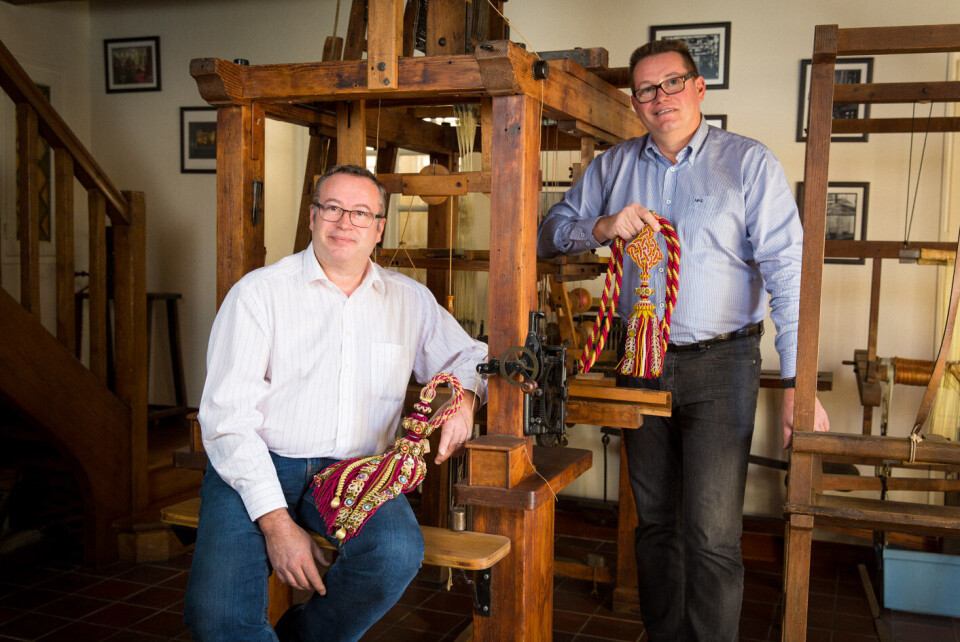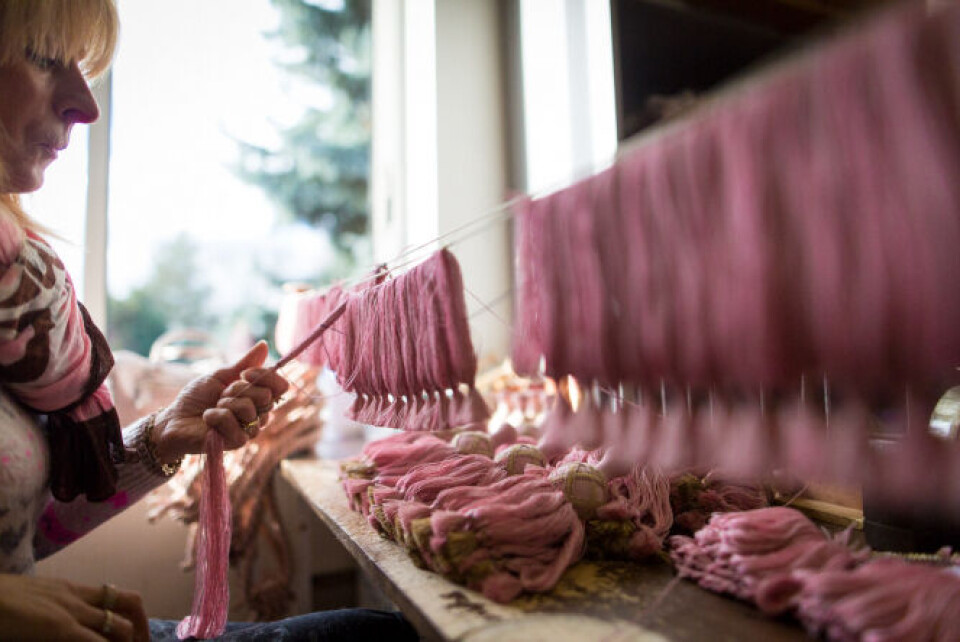-
Duck Cold! Four French phrases to use when it is freezing outside
We remind you of French expressions to use to describe the drop in temperature
-
When and why do we say le moral dans les chaussettes?
We explore this useful expression that describes low spirits
-
David Hockney among France’s New Year honours list
Former Normandy resident awarded second grade of honour
Art of trimmings: The artisans who supplied French and Monaco royals
Only one firm specialising in the ancient craft operates in France. Its owners describe the challenges that their business is facing in contemporary times.

Passementerie is the art of making elaborate decorative trimmings or edging, which can be in the form of cords, braid, tassels and fringes for clothing or furnishings.
The word comes from the old French passement, from passer, to trim. In English, both trimmings and passementerie are used to describe these types of soft furnishing decorations.
The craft has been practised in France since the reign of François 1 (1495-1547).
In the 16th century, there was a guild of passementiers, where apprentices trained for seven years before they could become “masters”.
Tassels, ornamental cords, curtain tiebacks and braids created by guild members were widely exported and gained an international reputation.
Today, Les Passementeries de l’Ile de France is the only family firm left and it specialises in fabric trimmings for furnishings.
It is based at Belloy-en-France, Val d’Oise, 25km north of Paris, and was opened in 1926 by the great-grandparents of the present owners.
At that time, the village boasted 10 passementerie workshops, but they closed down one by one as cheaper Asian products flooded the market and fashions for simpler home furnishings took over. Les Passementeries de l’Ile de France managed to adapt by introducing some modern machinery while keeping on traditional methods.
It sells a wide range of trimmings, from simple and affordable ones for private homes to unique and luxurious ones for palaces and important public buildings.

The company has clients worldwide. Its creations can be found in some of the top hotels in Paris, such as Le Bristol and the George V, the curtains at the Assemblée Nationale Parliament, the Opéra de Monte-Carlo, and the Prince’s Palace at Monaco. This last has real gold thread.
Twenty people are employed at the firm and share the very many different skills needed in producing the trimmings.
The braids used to trim edges are woven on machines, 20 of which are wooden Jacquard looms dating from the early 20th century. Jean-Christophe Oberti, who runs the company with his brother Yves, said: “We use the technology created by Frenchman Joseph-Marie Jacquard in 1801.
“He simplified the way in which complex textile patterns could be created, using thousands of cardboard punch cards laced together.
“Each row of holes corresponds to a row of a textile pattern. We have a collection of more than 2,000 patterns.
“If someone wants a new one, it is very time-consuming, needing four days to come up with and draw the design and three days to punch it hole by hole by hand in the cardboard.”
Their worst enemy is the weather, as the wood the machines are made of are sensitive to rain, mist, cold and heat, and they have to adapt their way of working each day.
As well as the skilled weavers, braid-making needs other artisans. Setting up the loom with the warp thread is a specialist job, as is drawing up the design and punching the cards.
In other areas of the workshop, there are workbenches for artisans making pompoms, curtain tiebacks, cut fringe ornaments and cords, by hand.
“There is no school to learn the trade,” says Mr Oberti.

“Our employees learn on the job. It took me more than 10 years to learn everything, but each different skill can be acquired in one to two years.”
He says his favourite is making cords: “It is the basic skill required for all aspects of our trade. I love it, as you have sole responsibility for making them from start to finish and there is freedom to be creative. It is unlike weaving braids, which is a team effort.”
Passion and patience are the main requirements for making ornamental trimmings as every detail counts: “My parents gave me the choice. I could choose another career, where I might perhaps earn more money, or I could stay in the business.
“I was brought up in this world and did not want to do anything else.
“But society is changing. In the past, jobseekers would come to us saying they wanted to join us because they loved this kind of work.
“Now the first questions from young people are about the salary and holidays.
“Money is their first concern. But to be an artisan, the most important criteria are passion for your craft and willingness to take your time. I do not do this for money, but to produce something beautiful.”
Related stories:
The only company making wooden jigsaws by hand in Europe is French
French crafts in focus: The art of cutting gems
France’s historic upturned boat houses offer clue to Dickens mystery
























